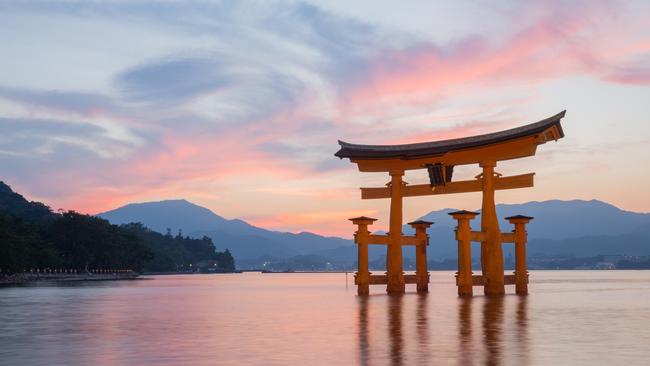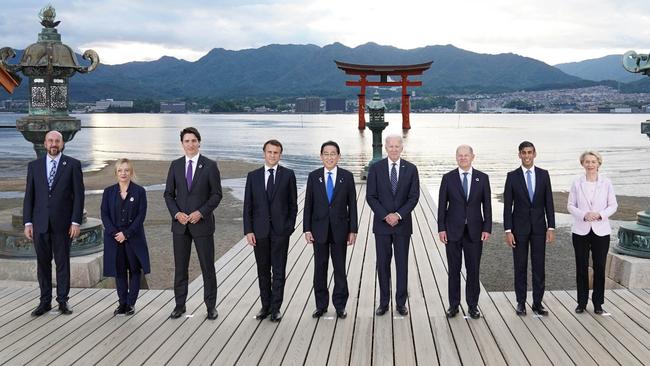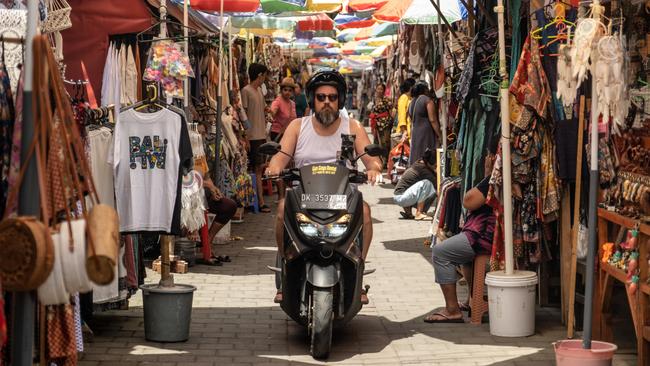Japanese town introduces tax to protect iconic ‘floating shrine’ from overtourism
A small island town is the latest must-see site to slap tourists with a fee for visiting its World Heritage listed icons.

Budgeting
Don't miss out on the headlines from Budgeting. Followed categories will be added to My News.
A new tax for visitors has made a visit to one of the world’s most iconic tourism spots slightly more expensive.
The Japanese government has implemented a tourism tax at the Itsukushima Shrine in the town of Hatsukaichi in the Hiroshima prefecture to protect it from overtourism.

The bright orange torii – a shrine gateway – is part of a 1400-year-old UNESCO World Heritage listed Shinto complex and one of the most beautiful and recognisable photo sports in Japan.
The gateway appears to ‘float’ in a lake which has made it a must-see and must-picture spot for visitors to Japan.
However, that popularity has put the Shrine and Hatsukaichi at risk of harm and prompted officials to implement a tourism tax.
The tax, which was originally scheduled to be rolled out in 2021 but was delayed by the pandemic, came into effect this month.
Each visitor to Miyajima, the island access point for the shrine, will now be charged an additional 100 yen ($A1.06) – or a 500 yen ($A5.32) pass that is valid for one year.

The funds raised by the tax will be used for building and improving tourism infrastructure, including public bathrooms, maintaining the shrine, and encouraging eco-tourism in the area.
Hatsukaichi Mayor Taro Matsumoto said the tax would enhance the island’s charm and that he hoped it would provide a “new ray of hope” for destinations throughout Japan that also suffer from overtourism.
He told reporters at a press conference it was “necessary to secure new financial resources in order to continuously maintain quality of the Island as a tourist spot”, per CNN.
Shunji Mikau, an official of the city’s planning department, described the tax as allowing tourists to take a vested interest as “stakeholders” in a joint project of protecting Miyajima.
“We feel the need to create a hospitable environment for tourists, while securing the livelihood of islanders,” he said, per CNN.
“We hope that tourists will become stakeholders who join us to protect Miyajima by sharing responsibilities.”
The city anticipates the new tax will bring in 140 million yen (just under $A4.5 million) in fiscal 2023, through to next April.

In 2019, Miyajima saw a record 4.65 million visitors. It is only populated by about 1400 people who will not be affected by the tax, neither will commuters, students or preschool children.
Its popularity shot up again in May when the Group of Seven leaders – Canada, France, Germany, Italy Japan, the UK, and US – visited the World Heritage site while attending the bloc’s summit in Hiroshima.
It is not yet clear whether the tax will be charged directly to visitors or the ferry operators to pass onto tourists, but is part of a wider initiative called Another Thousand Years which is committed to caring for and preserving Miyajima and the Itsukushima Shrine.
“We hope that future visitors will become guardians of the island just like the residents,” reads a mission statement posted on the initiative’s website.
“Why don’t we start doing what we can do now with pride? An island that enshrines the gods, we will cherish it for another thousand years.”
Miyajima is far from the first destination to consider or implement a tax on tourists, as authorities around the world consider how to curb the effects of over tourism.

Bali announced plans to introduce its own tourism tax in 2019. This year, authorities said they would charge international visitors – including children – IDR 150,000 each (about $A15) per visit to the island from February 14, 2024.
Also in Indonesia, Komodo Island, home to the famous Komodo dragon, is still finetuning a system to control how many people can visit the island and how much to charge those who are allowed to visit.
Some European destinations have introduced or are considering tourist taxes, too.
Venice is set to trial a tourism tax from Spring 2024 that would see day-trippers charged 5 euro (about $A8.40) for a visit to the historical Italian canal town after it was identified as World Heritage at risk, in part due to over tourism.
Amsterdam has also voted to increase its tourism tax from 7 per cent to 12.5 per cent in 2024, making it the highest tourist tax in Europe, according to Lonely Planet.
Tourists in Barcelona are charged about 2.25 euro a day ($A3.76), while tourists in Paris can expect to pay about 4 euro ($A6.68) per person per night.
Originally published as Japanese town introduces tax to protect iconic ‘floating shrine’ from overtourism




